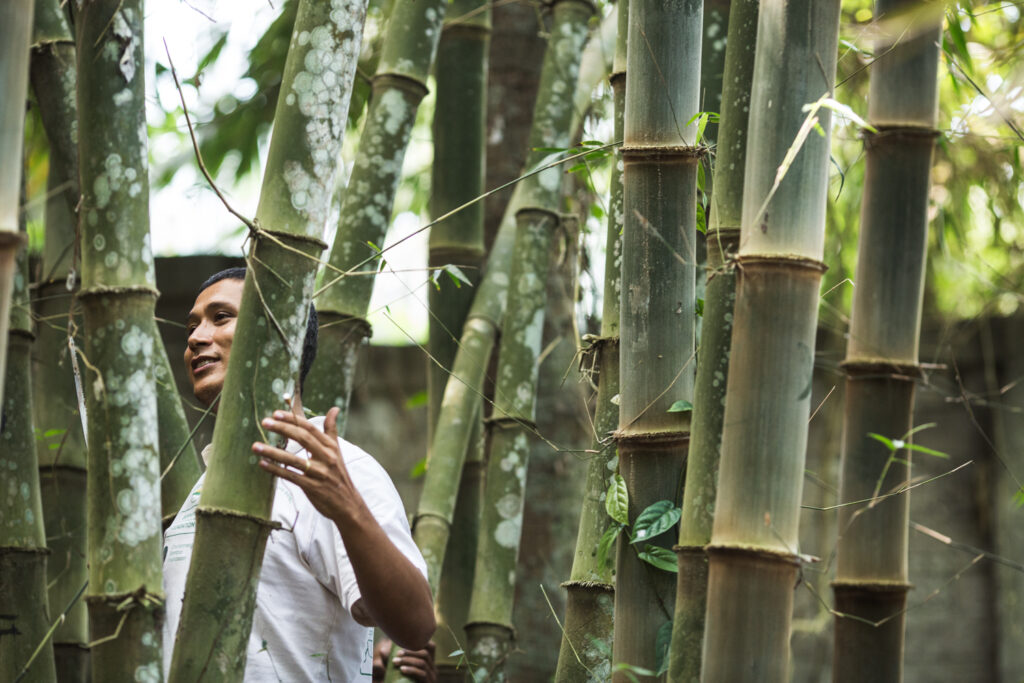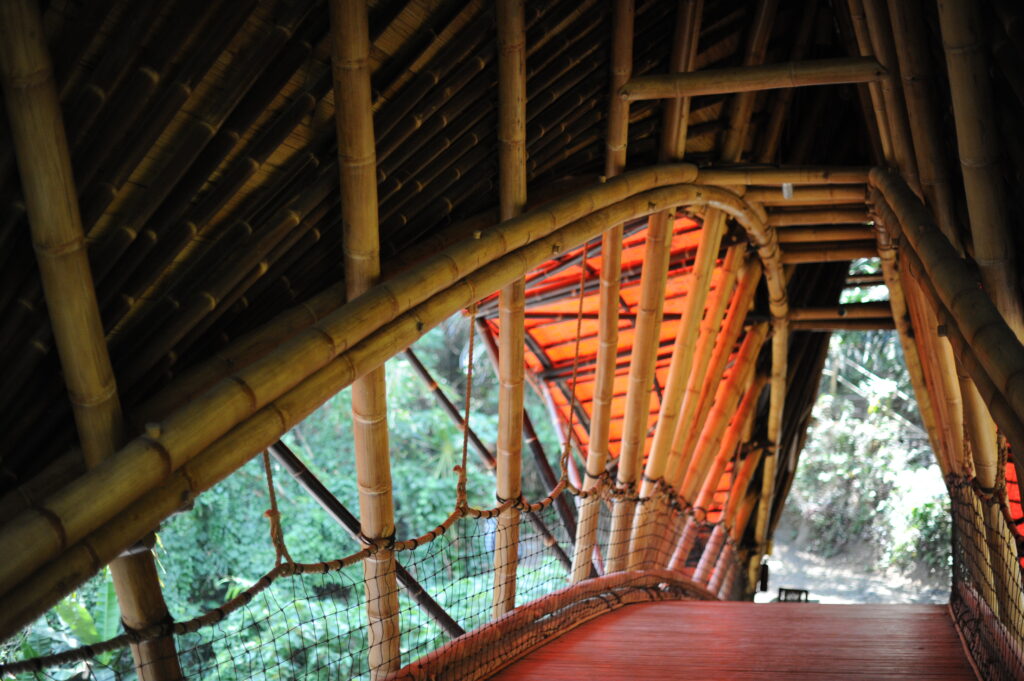How Bamboo is Used for Ceremonies in Bali
By Eliza Saudale | June 8, 2022 | Exploring Bamboo -

Bamboo is an incredible resource, from food, rope, fiber, construction and here in Bali predominantly, used in ceremonies. In this article, we discuss different types of bamboo that are used during Hindu ceremonies in Bali.
The bamboo plant has many incredible properties which can be used for several purposes. Bamboo timber serves as a promising sustainable material for the future, providing a potential solution for the environmental problems of today. Bamboo is strong and beautiful, making it the perfect construction material.
Traditionally, the Balinese consider it an obligation to maintain a balance between humanity, the gods, and nature. This principle is seen manifest through the many ceremonies in Bali, called Yadnya. Bamboo is used extensively during every Yadnya ceremony and is considered by the Balinese people to be sacred.
There are five species of bamboo used by Balinese for ceremonies.
- Jajang aya bamboo (Giganthocloa aya): this species has a height of about 15 meters, with a diameter of up to 12 cm. This bamboo leaf is considered sacred and it is often used for the roof of sacred buildings.
- Jajang taluh bamboo (Giganthocloa taluh): typically used for gedek (woven walls), also used in funeral ceremonies.
- Tiying ooh bamboo (Bambusa ooh): The split segments are rather long and thin, typically used as a place for offerings.
- Kedampal bamboo (Schizostachyum castaneum): yields reeds that are commonly used for holding holy water. Also often used as a rattle or rindik, a musical instrument made of bamboo.
- Tiying alas, or liplip (Dinochloa sepang): grows in its original habitat in the natural forest of Sepang-Buleleng Regency, and the Jembrana forest area. It is believed to be a sacred plant with medicinal properties. The Lempuyang Temple contains one clump of tiying alas.
In Bali, the ceremonies that most commonly feature bamboo include Galungan and Kuningan ceremonies as well as Ngaben (funeral ceremony). Bamboo also acts as a means to start the ceremonial ritual for what is commonly called Tetimpug (penimpug fire). In order to ensure a smooth ceremonial process, three pieces of bamboo are burned with dried coconut leaves as a form of offering and request to Sang Hyang Brahma. Coconut oil is applied on the surface of young Giganthocloa apus bamboo and then burning it until it makes a sound (pluk - erupts). This sound marks the start of the ceremony.
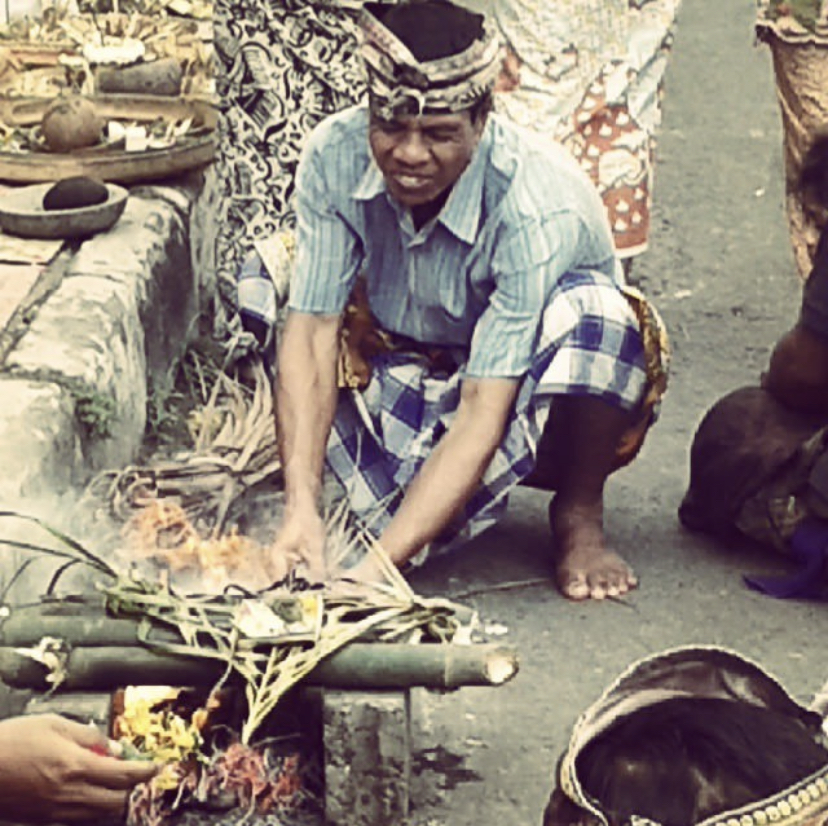
Gigantochloa robusta, which can reach up to 20m, is used for the pejor agung in larger ceremonies. This tall, curved bamboo is used in making the penjor, a symbol of the image of the highest and therefore most sacred mountain. During the sacred Galungan holiday, a bamboo stick decorated with coconut leaves is placed in front of every resident's home as an expression of gratitude for the victory of dharma (virtue) over adharma (tyranny). The element of Bamboo within the penjor is a symbol of both the mountain and the strength of Hyang Brahma.
Another bamboo-derived element of ceremonies is called Sanggah Cucuk. Sanggah cucuk is made of Giganthocloa apus that is first cut into 0.5m-long bamboo splits. The reeds are then assembled to form a house-shaped basket with a rectangular base and semi-circular roof, resembling a crescent moon. You can find sanggah cucuk at the front base of the penjor.
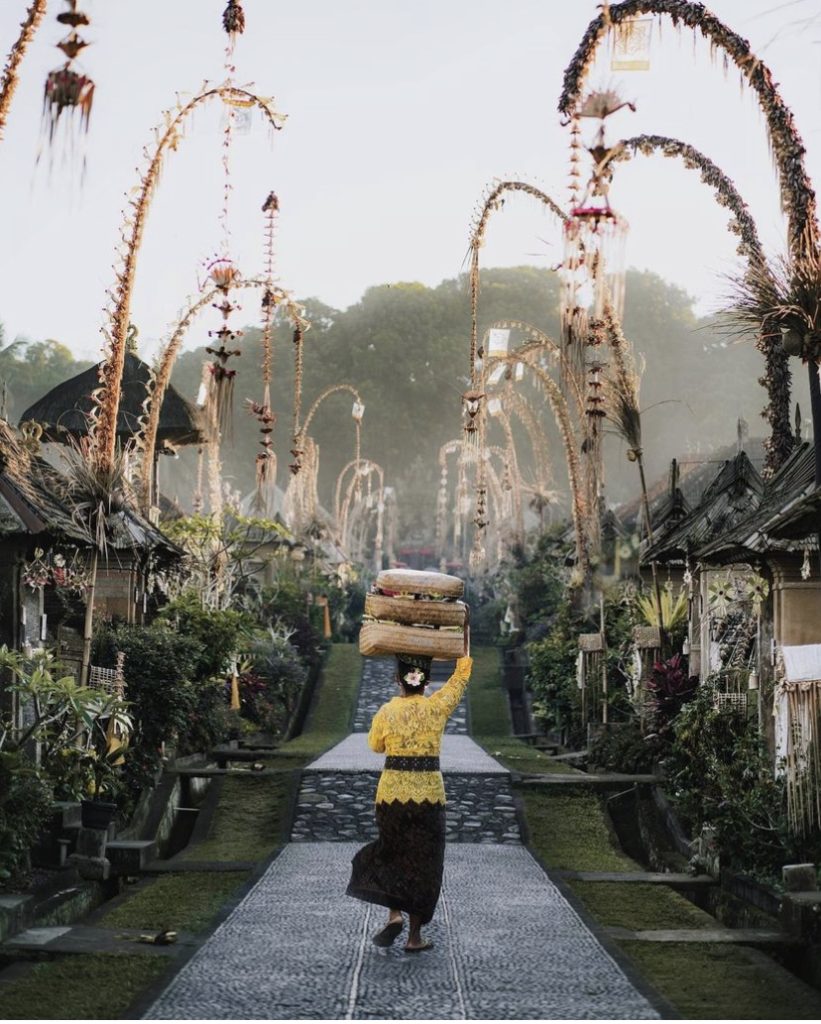
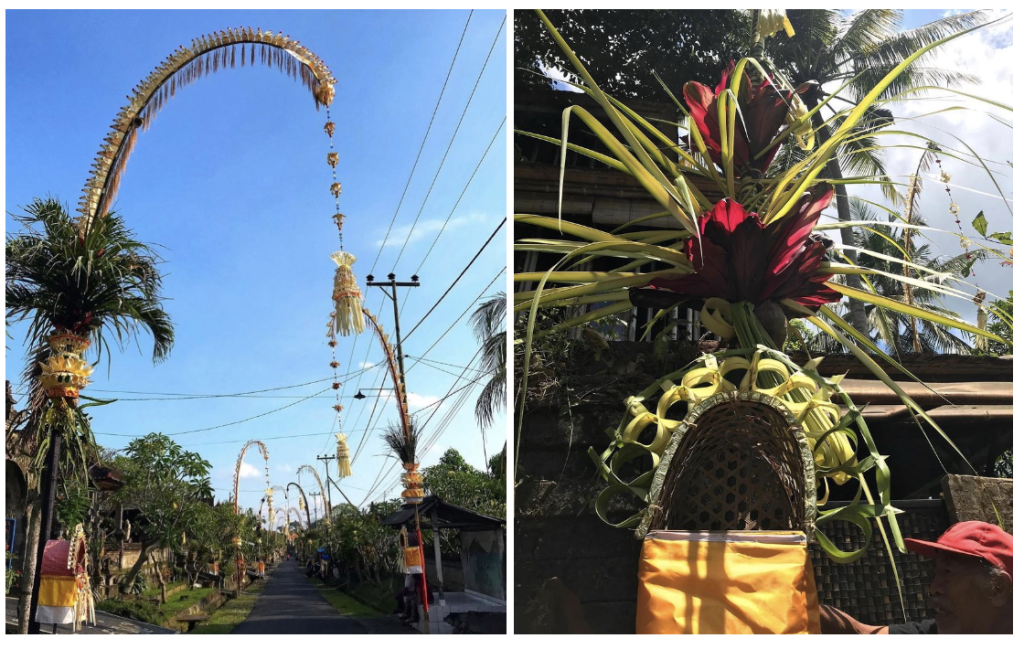
During Ngaben or Pitra Yadya ceremony (the funeral ceremony of Hinduism in Bali), bamboo is used as the material for objects which are crucial for the ceremony. The Ngaben ceremony is believed to release the soul of the dead and allow it to enter the upper realm, where it can either wait to be reborn or become liberated from the cycle of birth and rebirth.
One such bamboo-derived ceremonial object used in the funeral is the Pepaga (penusangan) - a bath or platform made of bamboo for cleaning/asagan the dead. Pepaga is made of Tiying. Before the ceremony is carried out, the pepaga is used to bathe, clean, and purify the sawa (corpse).
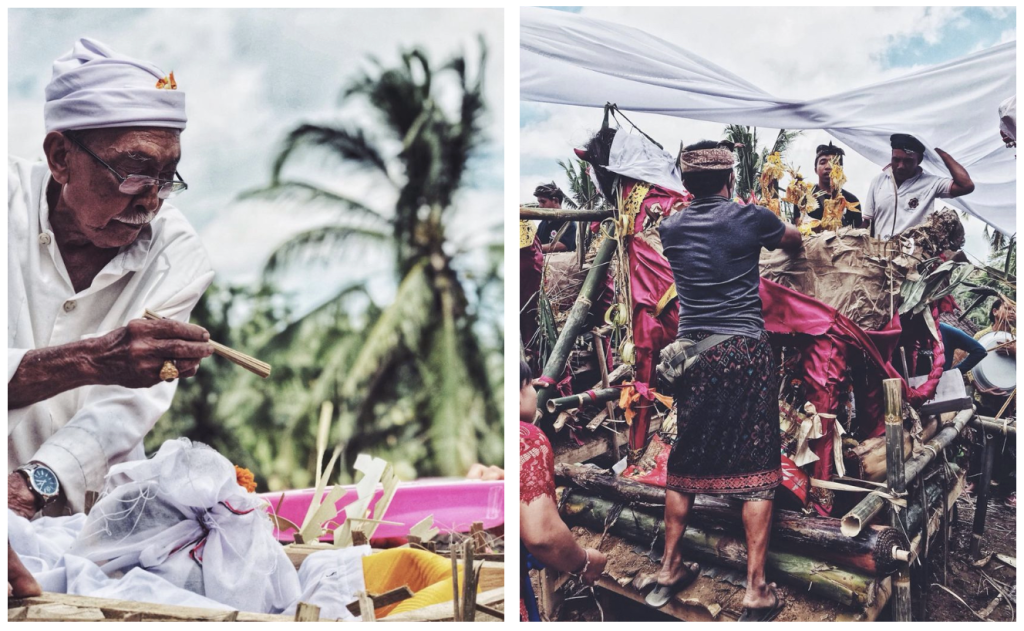
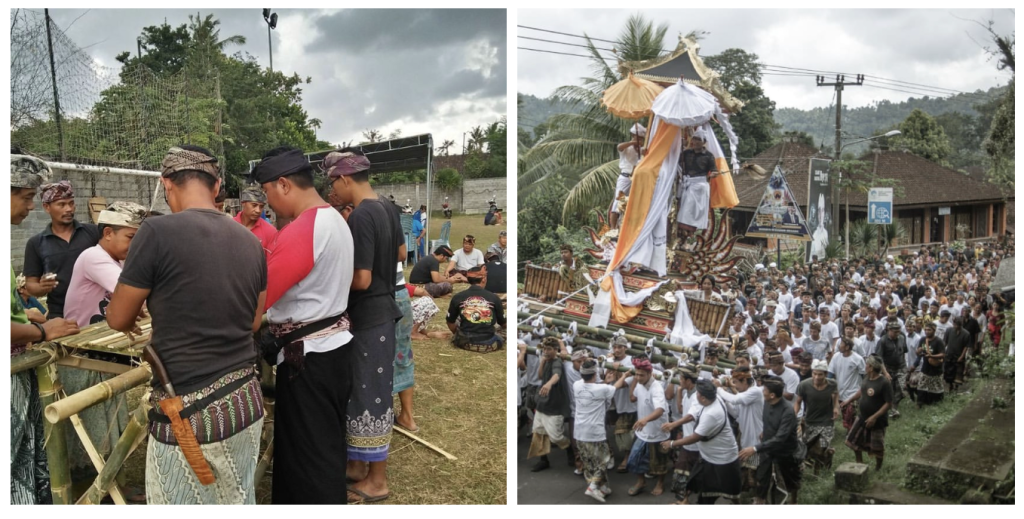
Very little of the bamboo plant is wasted. After the larger pieces of bamboo are stripped away for other purposes, what remains can be used to create skewers for food. Sate is a traditional food that the Balinese consume almost daily, and it is used as a mandatory offering in most ceremonies.
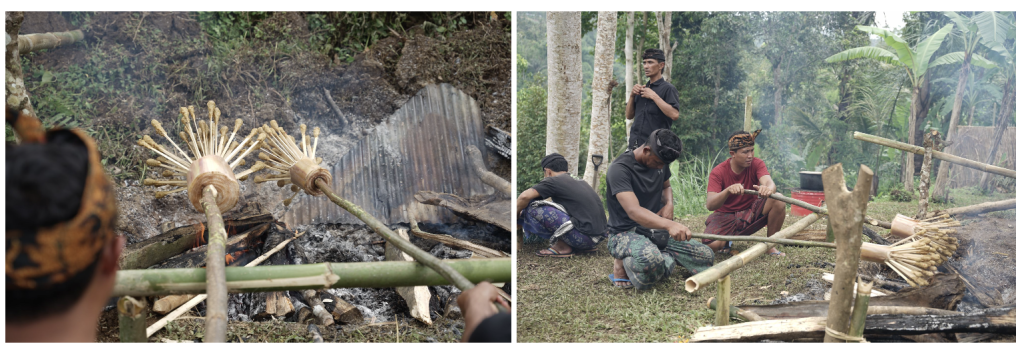
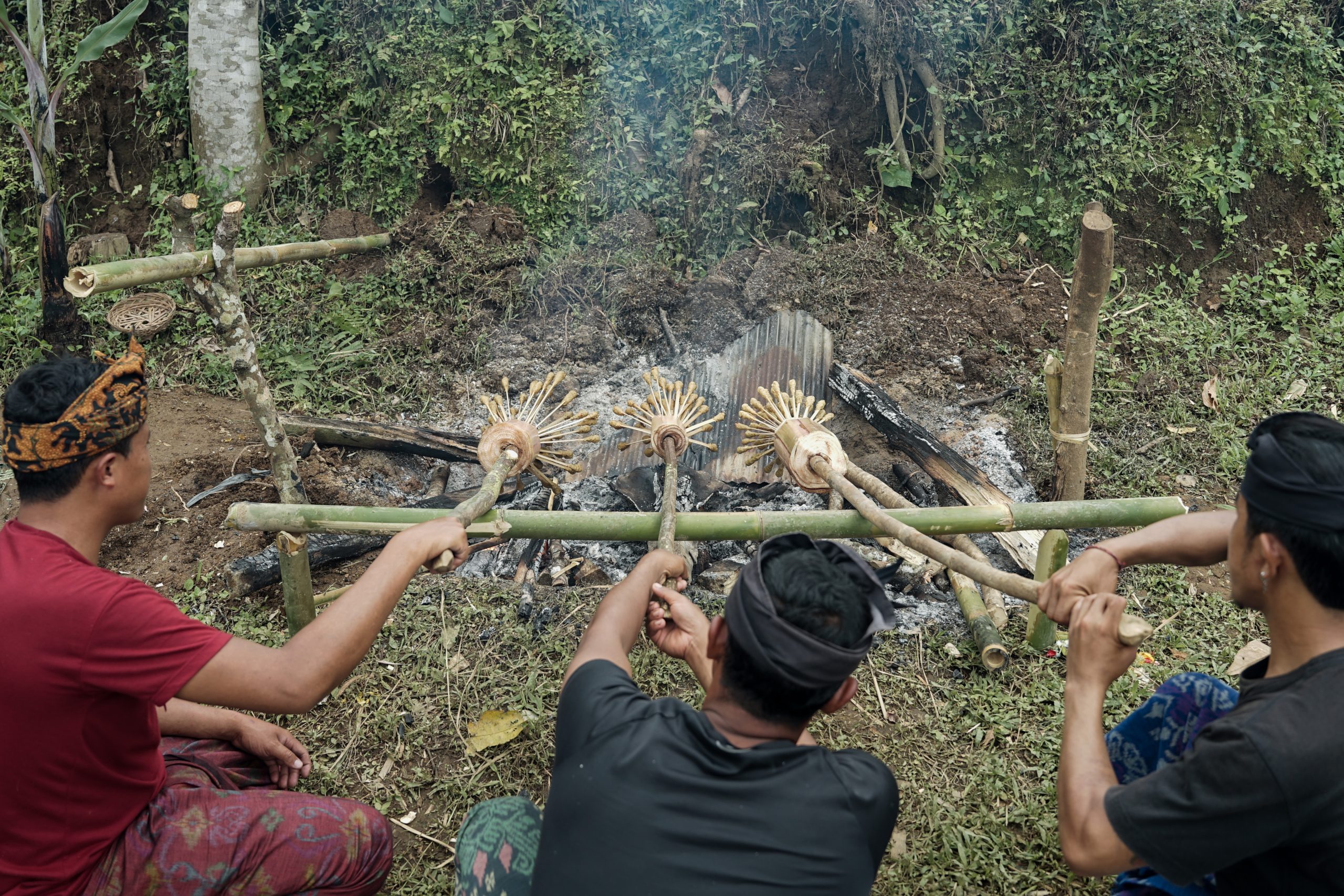
Some of the live bamboo culms contain water inside. The water contained in the bamboo plants at Lempuyangan Temple is considered to be Tirta Pingit, or holy water, and is used by the Balinese in various ceremonies. Balinese Hindus use the water in this bamboo tree as a means of prayer. Because this bamboo tree is considered sacred, Hindus are obliged to pray and ask for permission before collecting the water.
The bamboo species Gigantochloa apus (or Bambu Tali) is widely used in the rituals mentioned above and is often used to replace the species of bamboo, mentioned above, that are not easily available. It is very easy to find in Bali.
Bamboo is also used during the creation of Ogoh-ogoh, statues built for the Ngrupuk parade, which takes place on the eve of Nyepi day (silent day), Ogoh-Ogohs take the form of mythological beings, mostly demons. During the making of Ogoh-ogoh, Gigantochloa apus are cut into thin splits and woven to form a design. Bamboo is also used to create the platform on which the Ogoh-ogoh stands. The bigger the Ogoh-ogoh is, the bigger bamboo that is used.
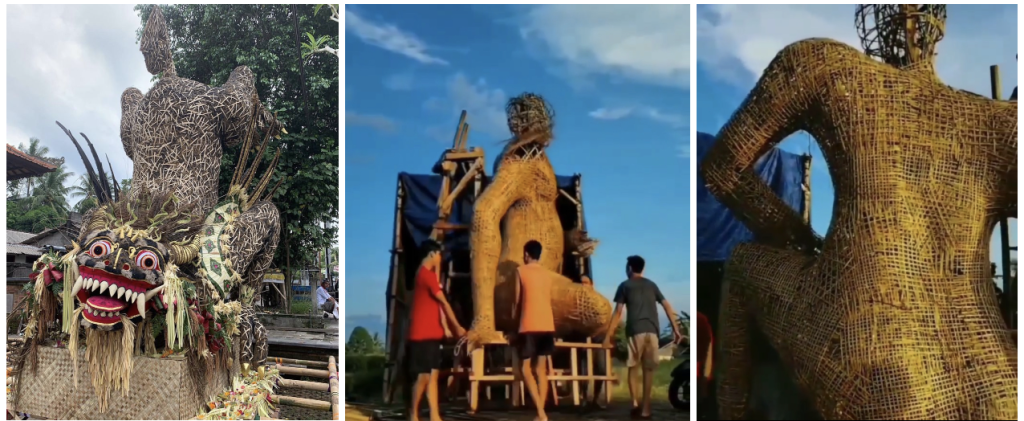
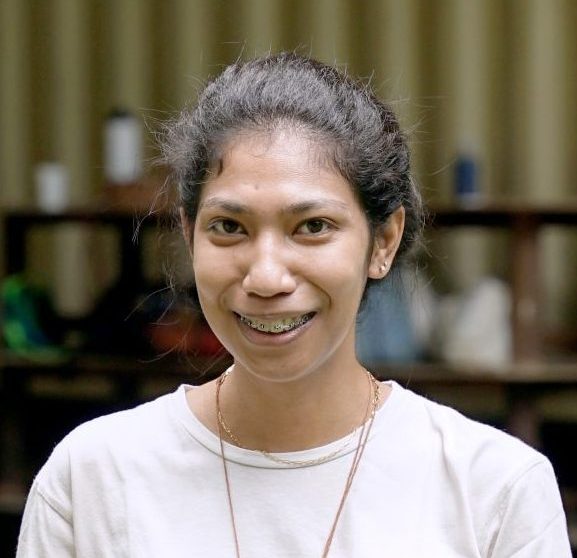
Eliza is a professional executive assistant and personal assistant with marketing and communications experience. Her passion is to be involved in a project-based working environment. She worked at Bamboo U as the Marketing and Communications manager and then as the Operations Manager until 2024.
OCTOBER 10-21, 2025
The 11 Day Bamboo Build & Design Course in Bali
In 11 days, we'll show you how to build bamboo structures we’ll share all that it takes to build with nature.
Start Anytime
The Bamboo Harvesting Course
The Bamboo Harvesting Course is an online step-by-step training to harvest and care for your bamboo clumps to ensure their longevity and productivity. This maximizes the potential of this beautiful grass as a rapidly renewable resource.Whether you are an architect, builder, or sustainability enthusiast, this mini course will enable you to utilize this rapidly regenerative resource as a durable construction material.It will help remove any fear or doubt about the durability of bamboo and help you build reputable bamboo structures that stand the test of time!













